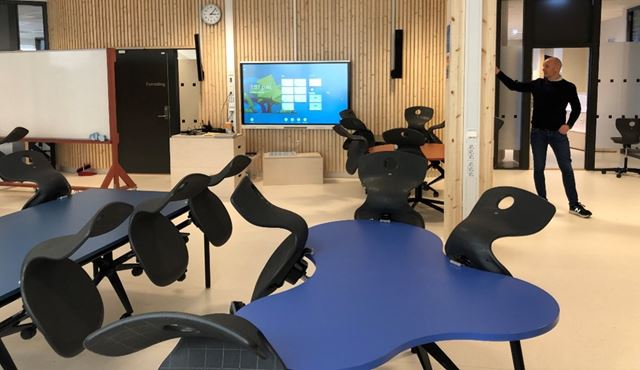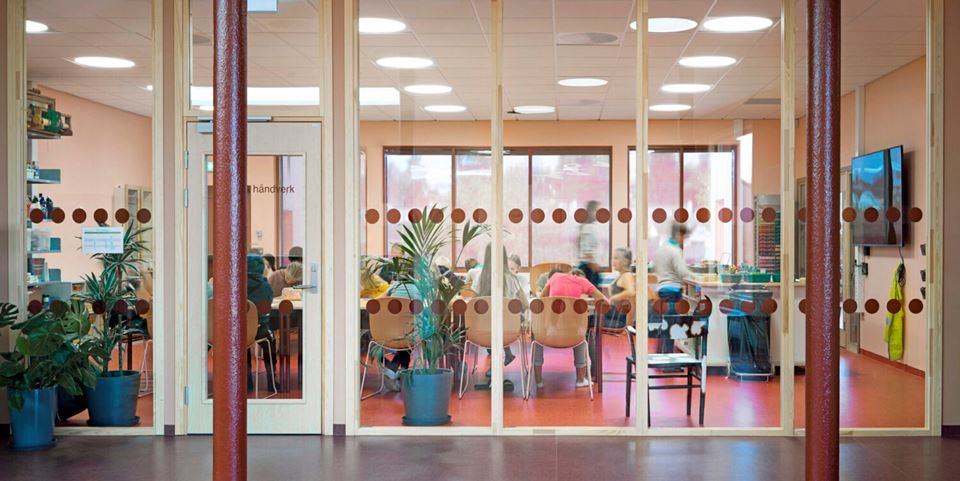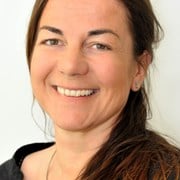When it comes to the school classroom, the Norwegian Education Act stipulates that pupils are entitled to a physical environment that promotes their health, well-being and learning. But exactly what kinds of setting will succeed in delivering these aims?
A research team is now looking into this question as part of a project called ‘Morgendagens skoler’ (The Schools of Tomorrow). The team is examining the links between educational theory, learning and architecture in newly-built primary and lower secondary schools in four Norwegian municipalities – Tromsø, Trondheim, Nordre Follo and Bergen.
“We’re looking to identify positive experiences that can be reapplied and further developed in new school buildings”, says researcher Karin Høyland at SINTEF.
Not least because research is telling us that our surroundings influence our well-being, as well as how we work and perform, both indoors and outdoors.
Diversity in learning aims shows the way
Our educational ambitions and knowledge about what promotes learning must form the basis for how we design our schools. Today, there exists a much greater variety of teaching approaches than was the case when many of our current Norwegian school buildings were planned and constructed.
Our current school curricula emphasise that pupils must become skilled in study techniques. In other words, they must ‘learn how to learn’. Moreover, they must learn how to solve problems by means of project work, entrepreneurship and by working together. Expertise in problems that affect the school environment has also become more important, and a more practical approach to learning is becoming the norm.
“We have also accumulated a lot of new knowledge about the importance of physical exercise, both for learning and for pupils’ physical and mental health”, says Høyland. “We know that play is of particular importance to the youngest children, and contributes a great deal towards developing creativity”, she says.
Today, the school is no longer a place where pupils spend just a few hours of their day. For the youngest pupils, the time they devote to school represents a major part of their day-to-day lives, and many also spend a lot of time on school premises in the evenings. School should be a space for inclusivity – embracing pupils with a wide diversity of needs.
It is essential that all these factors are considered during the planning of new school buildings.
‘The Schools of Tomorrow’ – about the project
- The aim of the project is to gather more knowledge about how a school’s physical environment is utilised and experienced by its various users, and how this corresponds with teaching aims.
- This is a joint project involving SINTEF and NTNU in collaboration with Tromsø, Trondheim, Nordre Follo and Bergen municipalities.
- The project is classified as a public sector innovation project and is being funded by the Research Council of Norway with contributions from the municipalities involved.
- The project will be concluded in 2024.
Interviews with teachers, pupils and planners
The researchers interviewed school building planners in the four municipalities, as well as managers at schools that have been built during the last five to ten years. Their aim was to make assessments of what these actors wanted to achieve and of the educational objectives that informed building design choices.
Pupils and teachers were also interviewed as part of tours taken around school premises. The aim here was to get them to talk about the rooms they enjoyed spending time in, and why. They were also asked to take pictures of things in the school environment that made an impact on them in both positive and negative ways.
“Our focus is on finding out how teachers and pupils experience their schools’ physical settings, how architectonic designs impact on educational practice, and vice versa”.
So says Solvår Wågø, who is a Research Manager at SINTEF and manager of the project ‘The Schools of Tomorrow’. Wågø was educated as an architect.
Pupils enjoy variation
Many school planners focus on creating a variety of contrasting learning environments. Learning is all about concentration, working together and the communication of knowledge. There are a variety of physical settings that support these different aspects of learning.
“Instead of pupils sitting in orderly rows of desks as in the more traditional classrooms, we’re now focusing on providing opportunities for different ways of working, both in terms of location and working posture”, says Høyland.
Learning spaces in the new schools thus comprise spacious solutions offering a variety of furniture items, larger tables and more comfortable seating. An amphitheatre design promotes a number of different ways of learning.
Many pupils say that they find this new variation very positive. Here are some examples:
“Some like to sit at square tables, some at rectangular tables, others at round tables – everyone’s different. I like the big tables best because they let a lot of us sit down together.”
“I work much better when I’m sitting together with someone. Others, on the other hand, choose to sit alone because they work best that way. I like to sit with these guys here. Even if we chat and talk a lot of nonsense, we actually work a lot better when we all sit together.”
“The old school was all dismal and boring. This one is more colourful and modern, and it looks like they’ve thought more carefully about the design. Personally, I feel more excited about learning with all this colour around me. It’s much better than the old boring desks. There are also lots of spaces where we can move around, both in- and outdoors. There weren’t so many things to do at the old school. It just had standard white walls. I felt a little shut in. But here, it’s much easier to socialise and get to know the others.”
Teachers are also positive about new opportunities for variation in the ways they work:
“In total, I spend about 20 per cent of my time teaching in class. Many of my pupils enjoy working together. They get to choose how they like to work. At the moment, I’m teaching project work in maths, which doesn’t involve traditional teaching. At other times there may be more.”
However, there are also some critical voices. One teacher explains how good intentions come to nothing if the classrooms are too confined.

Here, traditional classroom desks are being replaced by larger tables with room for more pupils. Photo: SINTEF
The furniture items are nice, but big. They use up a lot of space and make it difficult to organise different types of learning settings. Items that should have offered us variation in fact have to be arranged in permanent places. I visited another class where things were working very well. Probably because the pupils were smaller. There are fewer pupils in this class anyway.“
New ways of working require training
Adaptation to new types of classrooms and new teaching approaches demands training.
“It was clear that it is beneficial to involve both teachers and pupils in the planning process before we start using new school buildings”, says Høyland.
Two of the schools involved in the project had already tested some of the new classroom furniture in their old buildings before they moved. This testing enabled the schools to obtain experience that provided them useful insights into the items they wanted to use and those that they did not want to purchase.
Taken together, all this experience will be used to form the basis for new recommendations that can be transferred to other municipalities that have plans to build new schools.
- This link gives you access to a study that summarises our current state of knowledge in the field of the physical school environment and education (in Norwegian) .


